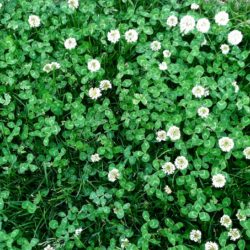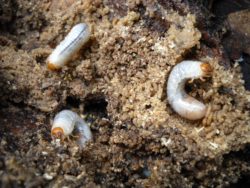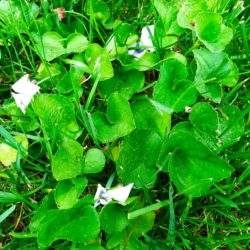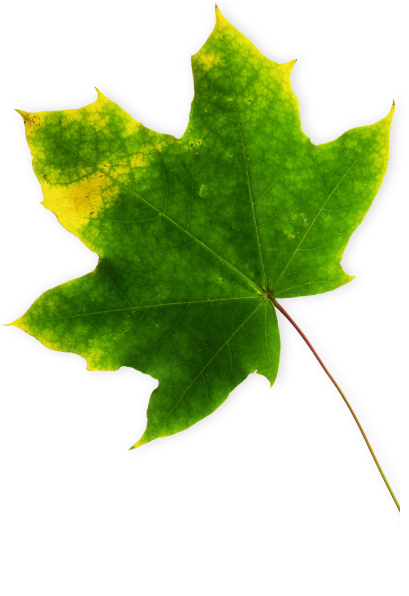Each year Mother Nature blesses us with an array of weather patterns and temperatures this spring has been unseasonably cool and we’ve received an unusual amount of rainfall. Weather conditions can certainly have an impact on your lawn, both positive and negative. Let’s take a look at three common lawn care problems that arise this time of year:
 Clover
Clover
Not only have air temperatures been cooler, but soil temperatures have remained below 50 degrees for longer than usual allowing clover to germinate earlier than our more desirable turfgrass. This low-growing perennial grows in a creeping fashion and will take residence where competition with turfgrass or other plants is minimal.
Clover can be easily managed with control products – or by hand pulling, if you’re up to it! However, clover can withstand summer conditions, cooler temps and even go dormant for years before germinating. It’s more likely than not, you will have to manage some amount of clover in your lawn each year.
 White Grubs
White Grubs
Lawn grubs, also known as white grubs, are the larval stage of several species of beetles that live in the root zones of lawns. Difficult to detect and harder to control, it only takes a few short weeks for a grub infested lawn to be completely destroyed. It is important to work proactively to prevent grubs from infesting your lawn.
White grubs feed on the roots of turfgrass and many other ornamental plants in the landscape. When the roots are consumed, the turfgrass plant has been severed from its supply of water from the soil. Affected areas initially look as though they are suffering from drought stress.
Lawn damage from grubs can often be mistaken for other forms of damage. It is important to know what you are dealing with. Some signs of grub damage to a lawn include:
- Brown patches in the spring
- Randomly shaped dead patches in late summer and fall
- Your lawn feels spongy
The most effective offensive against grubs is to prevent them in the first place. Preventive treatment for control of white grubs involves applying control product before egg hatch. Once the eggs hatch, the small grubs consume the control product and eventually cease feeding and die.
 Wild Violets
Wild Violets
There are different types of wild violets, cool-season annuals and others are perennials. They flower in a number of colors – white, purple, blue or yellow and this weed thrives in the shade where the soil is moist and fertile.
Violets, like ivy, are one of the toughest weeds to control. The durability of their creeping root system and the waxy coating on their leaves makes this weed quite resistant to control products. They are low-growing making them difficult to reach with a lawnmower and have the ability to store water in their robust stems making them capable of withstanding drought conditions.
So the question is how do you get rid of wild violets? Control products will work with multiple applications and best applied during the spring or fall. You could always take a chance to dig up these difficult weeds, however, if you miss any of the roots, it’ll more than likely grow back. The best method of control is a thick and healthy lawn with dense grass roots to prevent violets from taking hold.
If you are noticing any of these common lawn care problems throughout your lawn, please be sure to reach out the professionals at Natural Tree & Lawn for a free quote for our lawn care program. We will work with you to find the best solution and help guide you to a lush, beautiful lawn!
